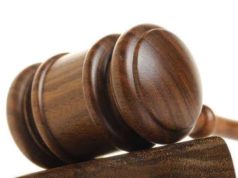Table of Contents

The segregation of African Americans in the United States has been a long and contentious issue, with legal battles fought in the highest courts of the land. The Supreme Court has played a critically important role in shaping the legal landscape around segregation, and its decisions have had a profound impact on American society. In this article, we will explore the history of segregation in the United States and its relationship to the Supreme Court’s decisions. We will take a closer look at landmark cases such as Brown v. Board of Education and their impact on the fight for civil rights and desegregation.
Segregation: A Brief History
Segregation of African Americans in America dates back to the colonial era, when slavery was legal. However, the abolition of slavery in 1865 and the granting of citizenship to African-Americans did little to end segregation or discrimination. In fact, some states passed laws that enforced racial segregation along with disparate treatment for minority individuals. Jim Crow Laws, passed primarily in Southern states, implemented segregation across various aspects of daily life, including schools, public transportation, restrooms, and even drinking fountains.
The Jim Crow era persisted for nearly a century, until the landmark decision in Brown v. Board of Education in 1954. The Supreme Court declared that segregation in public schools was unconstitutional under the Equal Protection Clause of the 14th Amendment. This decision was the beginning of a legal revolution, as it provided a framework to challenge segregation in other areas of American life and paved the way for more significant civil rights legislation.
How did the Supreme Court influence segregation in America?
The Supreme Court has played a critical role in shaping the legal landscape around segregation in America. From the earliest days of this country’s history through the modern-day, the court’s decisions have helped to define what segregation means under the law and how it might be remedied.
From the 1896 ruling in Plessy v. Ferguson, which upheld the concept of “separate but equal” facilities for white and black Americans, through more recent rulings on issues like voting rights, the court has made a significant impact on the fight for civil rights. Not all of these decisions have been positive, as some have reinforced discriminatory policies and made it more challenging for African Americans to access equal rights and opportunities. In the following sections, we will take a closer look at some of the most critical Supreme Court decisions related to segregation in America.
Plessy v. Ferguson
One of the earliest and most significant Supreme Court cases related to segregation in America was Plessy v. Ferguson, which was decided in 1896. In this case, the court upheld a Louisiana law that required segregated segregated “separate but equal” facilities for white and black Americans. The plaintiff in the case, Homer Plessy, was arrested for sitting in the “whites only” section of a train car and subsequently sued the state for discrimination.
The Supreme Court ultimately ruled that the separate-but-equal provision of the law met the “equal protection” requirements of the 14th Amendment. This ruling established legal precedent for discrimination in housing, schools, and other venues.
Plessy v. Ferguson was an essential moment in American legal history as it laid the groundwork for justification of segregation and Jim Crow policies throughout the South. The decision also helped make it more challenging to challenge and change discriminatory laws and practices.
Brown v. Board of Education
Brown v. Board of Education was the defining moment in American legal history – a case that not only struck down the “separate but equal” doctrine but also inspired a whole generation of legal and political activists who fought for civil rights. The case began in 1951 when a group of 13 parents in Topeka, Kansas filed a lawsuit for their children with the help of the National Association for the Advancement of Colored People (NAACP). They argued that separating children based on race in public schools deprived them of access to equal educational opportunities.
In 1954, the Supreme Court ruled that segregation in public schools was unconstitutional and violated the Equal Protection Clause of the 14th Amendment. Chief Justice Earl Warren famously wrote in his opinion that “In the field of public education, the doctrine of ‘separate but equal’ has no place. Separate educational facilities are inherently unequal.”
Brown v. Board of Education was a landmark decision as it nullified the long-standing precedent set by Plessy v. Ferguson. It helped to inspire the Civil Rights Movement and led to the formation of the Southern Christian Leadership Conference (SCLC) under the leadership of Dr. Martin Luther King Jr.
The impact of Brown v. Board of Education was swift, with integration efforts beginning in public schools around the country. However, it would take several years and some significant legal battles to enforce this decision across the board fully.
Civil Rights Act of 1964
The Civil Rights Act of 1964 was another critical moment in American history as it helped to end segregation and discrimination in public life. The act was signed into law by President Lyndon B. Johnson and made it illegal to discriminate against individuals based on race, color, religion, sex, or national origin. This meant that segregation in public places, such as schools, restaurants, and hotels, was now illegal under federal law.
To enforce this law, the federal government deployed marshals to ensure compliance. This measure was necessary to protect African Americans who faced violence and discrimination when attempting to access new freedoms. Significantly, the Civil Rights Act of 1964 provided the legal framework for the Voting Rights Act of 1965, which helped to eliminate arbitrary and discriminatory practices that prevented African Americans from voting.
Conclusion
The Supreme Court has played a critical role in shaping the legal landscape around segregation in America. From the earliest days of American history through modern-day, the court’s decisions have helped to define what segregation means under the law and how it can be remedied. While not all of these decisions have been positive, the landmark ruling in Brown v. Board of Education marked a turning point in the struggle for civil rights. The decision declared that segregation in public schools was unconstitutional and opened the door for more significant advancements in desegregation.
Today, there are still many challenges to ending segregation in American society. However, the legal battles and social progress that have been made over the years continue to pave the way forward for a more just and equal future.
Racial segregation, which was seen as the legal separation of different races of people due only to their specific background, was first instituted by the “Jim Crow laws. These were instituted and employed from the end of the 1800s until the latter part of the 1900s. These laws set forth that all public areas of interest be racially segregated. Although whites believed this as an obvious effective institution of the belief in the statements of “separate but equal” doctrine, which used to take up residence within United States Constitutional law, all that occurred as a result was more harm than anything else.


























